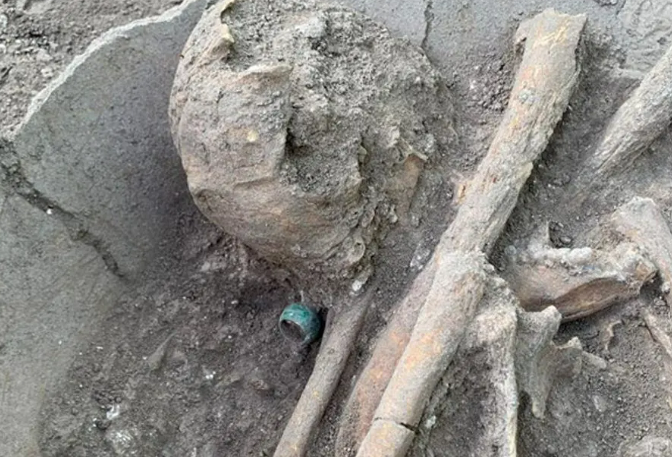Archaeologists from the National Institute of Anthropology and History (INAH) have discovered a Maya burial containing human remains wearing a jade ring. The discovery was made in the Mayan city of El Tigre, known as Itzamkanac (meaning place of the lizard snake), located near Rio Candelaria in the Mexican state of Cameche.
Middle Preclassic (600–300 BC) people began to live at El Tigre, and it remained inhabited up until roughly AD 1557 after the Spanish conquest. The Acalán Maya, a branch of the Chontal or Putn Maya, used the city as their political center. According to some historians, Cuauhtémoc, the last free ruler of the Aztec Empire, was executed at El Tigre on the orders of Hernán Cortés.
El Tigre is the largest Pre-Classic Maya structure ever unearthed and one of the largest Maya Lowland structures of any period. Excavations at El Tigre are carried out by the Ministry of Culture of the Government of Mexico.



Recent excavations to the west of the main pyramid temple uncovered the remains of a human funerary offering placed in a ceramic vessel, part of a ritual deposit, along with large vessels and ceramic bowls.
An analysis of the skeleton reveals that it belonged to a young adolescent who was sacrificed and buried while sporting a jade ring sometime in the Late Classic Period (AD 600–800).
The examination of the skeleton indicates that it belongs to the Late Classical Period and was a young adolescent. The person found in a bent position and wearing a jade ring is thought to have been sacrificed and buried.
In pre-Columbian Mesoamerica, jade was a valuable and scarce resource. As a result, Jade was primarily an elite good and held great symbolic value in addition to its financial value. Jade has great religious and spiritual significance during ceremonies since it was connected to both the sun and the wind as well as being metaphorically connected to both life and death.
